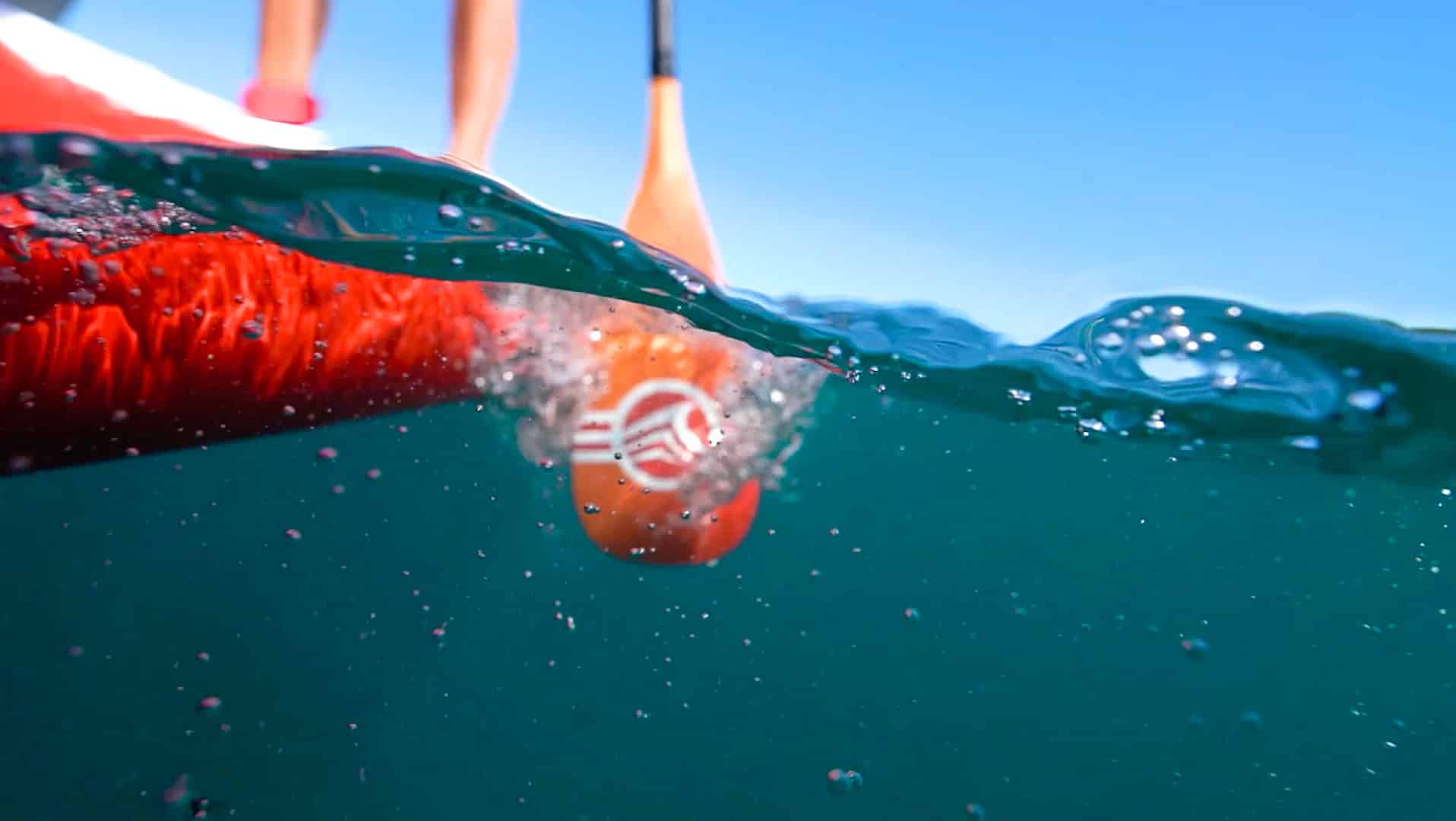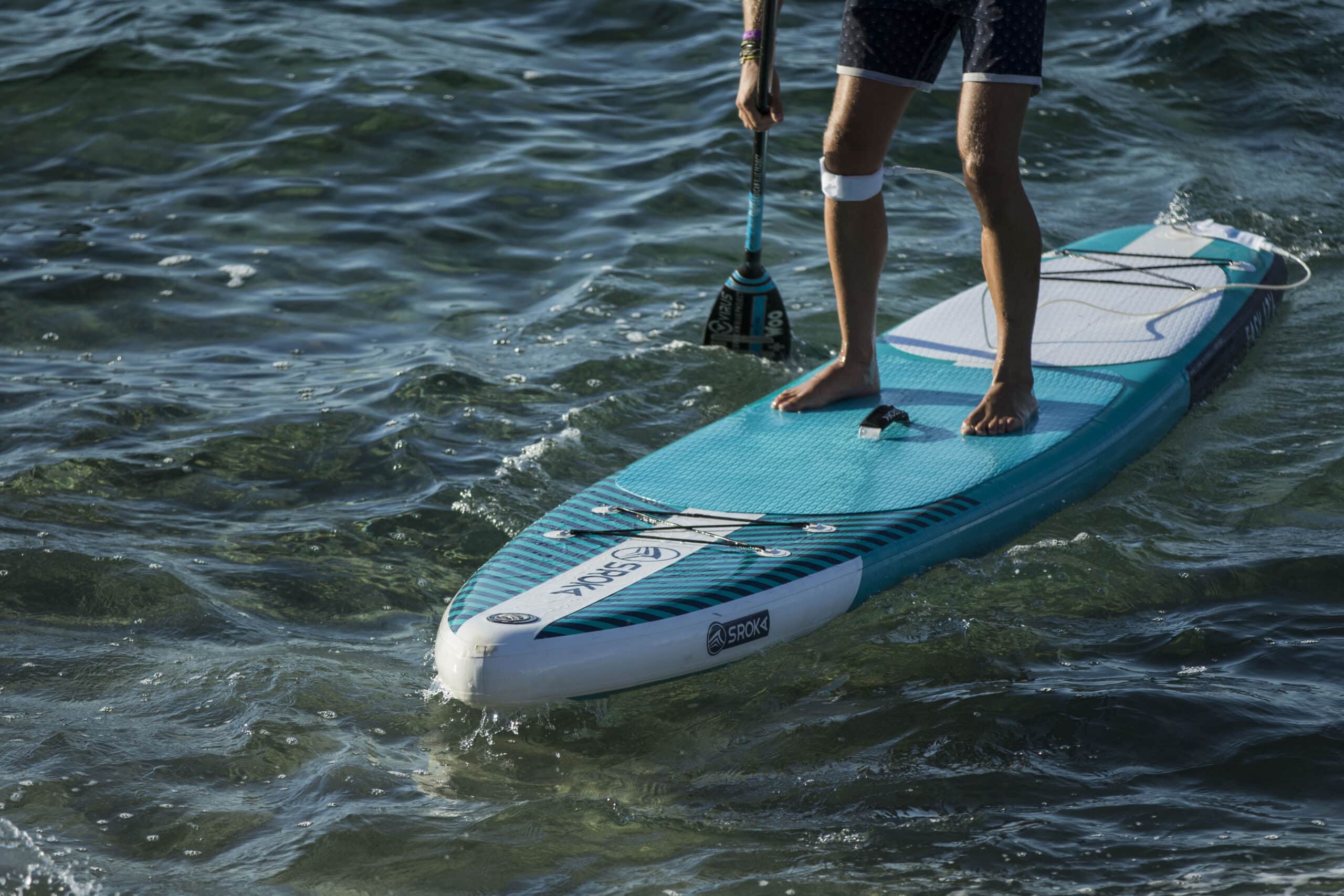In general, we can draw a parallel between the paddle and the car in order to better understand the differences between materials and variations in …
My inflatable stand up paddle board (SUP) is deflating / leaking
My inflatable stand up paddle board (SUP) is deflating / leaking
Is your SUP deflating?
If you are on this page, it is because you are having a problem with your inflatable stand up paddle. You’ve come to the right place to remedy this problem and resume your rides on the water with peace of mind. Before you start looking for possible leaks on your paddle, be aware that the air temperature (inside/outside the board) can act on the pressure within your paddle.
Is your SUP deflating?
If you are on this page, it is because you are having a problem with your inflatable stand up paddle. You’ve come to the right place to remedy this problem and resume your rides on the water with peace of mind. Before you start looking for possible leaks on your paddle, be aware that the air temperature (inside/outside the board) can act on the pressure within your paddle.

WHY DOES IT DEFLATE?
Before you solve the leak problem, you should already understand why your paddle is deflating. This can be due to improper use (rubbing against the ground, hitting rocks, etc.), normal wear and tear (loosening of the valve) or poor build quality. The build quality of “low-cost” paddles is often the major cause of leaks. Indeed, to cost less to sell, the paddle must cost less to manufacture.
The factories then use tarpaulin pick to use for waterproof bags while we use semi-rigid boat PVC. To reduce the amount of raw materials, low-cost paddles are made of only one layer of PVC, they are made of “single skin”. On the other hand, we sell “double skin” paddles. This single skin is much more fragile and sensitive than a double skin that will last 2 times longer.
The rails of the board are also made of single skin on low-end paddles while they must have at least two to resist and stiffen the SUP.


FIND THE LEAK
To find the leak of a SUP that deflates, you must first inflate it (a pressure of 13 psi is sufficient for this operation). As with a bicycle inner tube, the easiest way to find the leak is to use soapy water. The best thing here is to spray this water on the paddle and note with a pen the places where small bubbles form. The bigger the bubbles, the bigger the leak.
Usually, the leaks are located along the rails of the paddle or at the level of the valve.
THE VALVE
The most common leak problem on a paddle board is at the level of the paddle board’s inflation valve. This is a recurring problem because the valve is stressed every time the board is inflated and deflated.
It’s very simple to adjust thanks to the valve wrench that is in your repair kit. This is because the valve is made up of two parts aimed at each other. The first is in the paddle, among the dropstitch and the second outside, the one you use to inflate your board. After many uses of the Stand-Up Paddle, these two parts can be unscrewed, allowing air to pass through. All you have to do is insert the wrench into the valve and tighten the upper part into the lower part. It is best to do this when your paddle is deflated.
At this point, you’ve solved the most common leak problem.


THE RAILS: A RECURRING PLACE FOR PADDLE BOARDS THAT DEFLATE
Rails are leak-prone areas because they are the junction between the top and bottom pvc. The risk of leakage is even greater if you own a low-end paddle made of single skin. This is because these discounted models are not made to last, for example a single layer of PVC is applied to the rails even though this is the area most subject to impacts. Next, the rails must seal between the top and bottom of the board. This simple layer on the rails is not enough, it makes the rails of the board fragile and much less rigid.
To repair a leak on a rail, you must first define precisely where the leak is located and mark it with a pen so as not to lose it. Then, get a quick-setting glue such as super glue, and a vacuum cleaner. Start by emptying the board of air and vacuum-sealing it by connecting the vacuum cleaner to the valve. When this is done, inject glue into the hole. This will be sucked inside and will therefore clog the leaks. Finally, press with a thin, solid (but not sharp) object on the glued area for about 5 minutes. Then let your paddle board dry for a few hours and then you can inflate it again and spray with soapy water to make sure there are no leaks left.
REPAIRING A HOLE WHEN YOUR PADDLE DEFLATES
If you open your repair kit, you will find (at Sroka Company at least) a valve wrench, a neoprene handle for high-end models, a piece of PVC and stickers. It is with this piece of PVC that you will be able to repair a hole on a smooth surface. To do this, it is imperative to mark the hole as seen above, then clean (with acetone) and lightly sand the surface in order to facilitate the adhesion of the glue. Cut the PVC of the kit according to the shape and size of the hole, leaving 3 centimeters of margin around the hole.
In addition, we do not provide PVC glue in our repair kits because we do not have the right (from a criminal point of view). We advise you to go to a hardware store and get a special PVC pneumatic PU adhesive (the best on the market:
https://www.bigship.com/catalogue/entretien/restauration/colle/soromap-nauticolle-22-colle-pu-pneumatique-750cc
)
Once the glue has been applied according to the instructions on the pot, leave the paddle aside for at least 48 hours before inflating it again.
If you still have questions about this, or for any other request, please do not hesitate to contact us !
Article you may be interested in
For more than 10 years now, inflatable stand up paddle boarding continues to develop and spread on French beaches. Beyond the fun aspect of the …
Are you looking for an inflatable paddle board for the summer to sail at sea or in lakes? The inflatable paddle board really has a …
Paddle boarding, no need to introduce it, it is a water sport that allows you to move with a board and a paddle on the …





